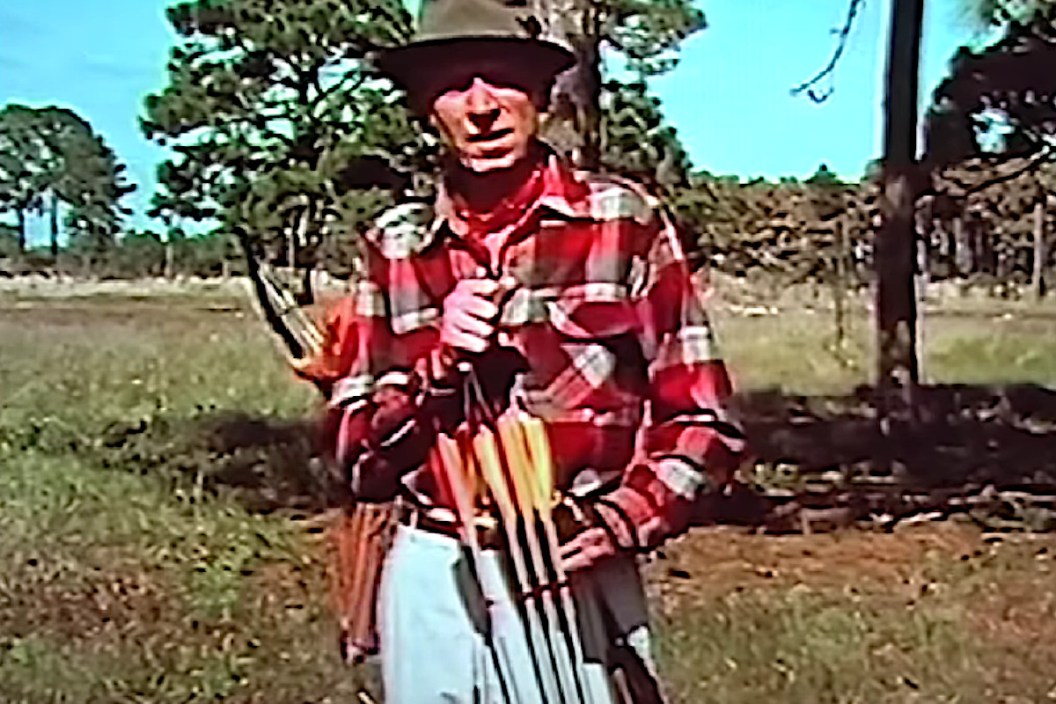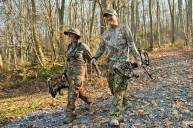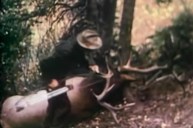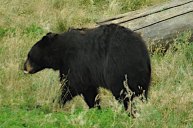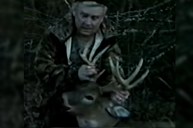Almost every hunter knows the name Fred Bear. Those who don't are likely still new to the tradition, or they've been living under a rock the whole time. The "Father of Modern Bowhunting" was just that, a true pioneer who built upon the earlier foundations set by fellow archery hunting legends Art Young and Saxton Temple Pope. The outdoorsman's journey towards becoming one of the most influential figures in hunting was not an easy one. Many people do not realize how late in life Bear got his start with a stick and string, which makes his big game world records and other accomplishments even more impressive.
Most people associate Bear with his many hunting expeditions to far off lands in pursuit of grizzly bears, polar bears, lions, tigers, and more. Many forget his company Bear Archery was responsible for many modern innovations that took traditional archery to the next level, allowing hunters to harvest deer and larger big game animals more efficiently than ever before. The fact that he started this company during the middle of the Great Depression and that it is still thriving to this day is a testament to the legacy he built during his life.
With that in mind, let's look at some of the ways Bear changed the face of modern bowhunting forever.
Bear Was Originally a Gun Hunter
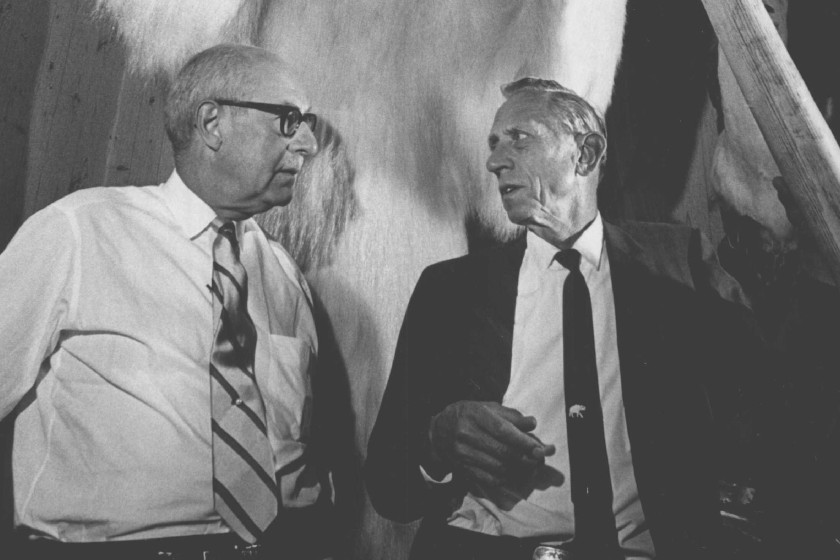
Getty Images: Denver Post
Fred Bear is usually associated with Northern Michigan, but he was actually born in Pennsylvania in 1902 as the middle child of three. While many hunters might assume one of the most polarizing figures in the history of the sport hunted with a bow from a young age, he didn't start bowhunting until 1929.
"I grew up as a gun hunter, my dad was a gun hunter," Bear told Mike Avery during a 1985 interview, three years before his death.
Bear went on to describe how he bagged a big buck in Michigan's Upper Peninsula in 1933 using a gun and deemed it "too easy." Bear wanted something more sporting and challenging. Fortunately for the world of hunting, Bear saw Art Young's classic hunting film "Alaskan Adventure," which spurred his interest in archery. The two legends met not long after that, and Young began mentoring Bear on the construction of archery equipment. Even with an archer as skilled as Young helping him out, it still took Bear years to make his first harvest with archery equipment.
It's not that Bear wasn't skilled with a stick and string during those early years. He eventually became an accomplished shooter in target archery. He was a three-time state champion in Michigan, winning it in 1934, 1937, and 1939. Bear finally managed his bow harvest with a Michigan whitetail in 1935, and it was a historic advancement from there. Bear went through a lot of trial and error to perfect his hunting technique. He noted in that same interview with Avery that the skills one learns while bowhunting are unmatched.
Bear Archery is Founded
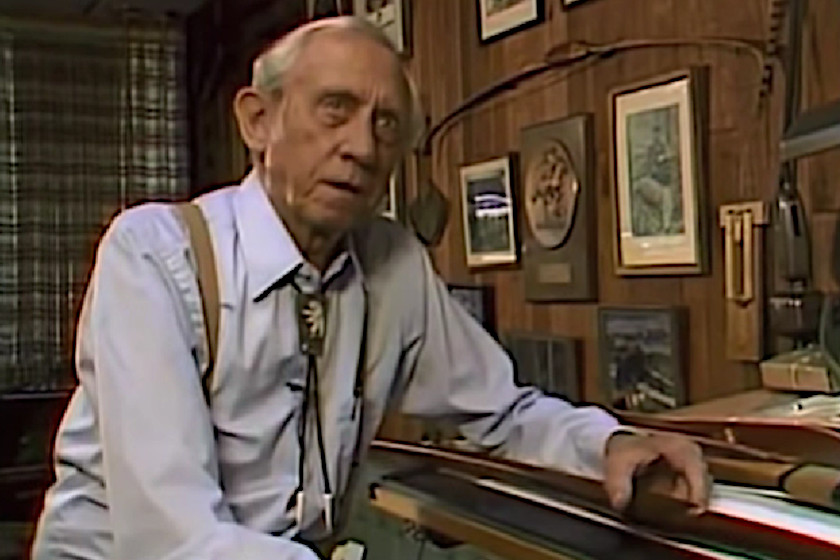
YouTube Screenshot: ClassicBowHunts
Like many young Midwestern men in the early 1920s, Bear eventually found his way to Detroit, Michigan where he got a job in the burgeoning auto industry, working for both Chrysler and Ford. He worked as both a glue maker and a wood carver in these roles, and the skills he honed were later used in the construction of his first traditional bows. In 1933, he found himself out of a job when the plant he was working at caught fire. It led him to found Bear Archery, which at that time was originally called Bear Products Company. The organization's original focus was not on archery but advertising. Bear admitted in later interviews that the bow stuff was basically a side project, as no one was making money from bowhunting gear back then. Silk screen advertising was what paid the bills in the early days of the company.
Like many young men at the time, Bear was nearly broke after losing his job, so he teamed up with a friend and former co-worker named Charles (Chuck) Piper to form the new company. Bear still had some of his own equipment, which was valued at about $600. The two managed to convince Piper's mom to loan them another $600, which meant that one of the most famous companies in modern archery would be started for about $1,200. That was a lot of money at the time, especially during the Great Depression.
The new company started like many great companies: in a garage. Growth was slow, but Bear was determined to make his passion into a career. Some of their first custom traditional bows were manufactured by hand by expert bowyer Nels Grumley, who Bear hired in 1938. Grumley stayed with the company for a decade, leaving in 1948. According to Vintage Archery, there were other bowyers who worked for Bear during those years, but Grumley was the most famous of the bunch.
The company started seeing enough success that Bear was able to sell off the portion of the company that focused on advertising in 1940. With that, his entire focus shifted to producing archery hunting equipment. Even though the name Bear was starting to get out there, these were still custom-made bows that took a lot of time to produce. However, Bear's connections to the auto industry were still strong, and a revolution was coming.
Bear Archery Revolutionizes Mass Production of Bows
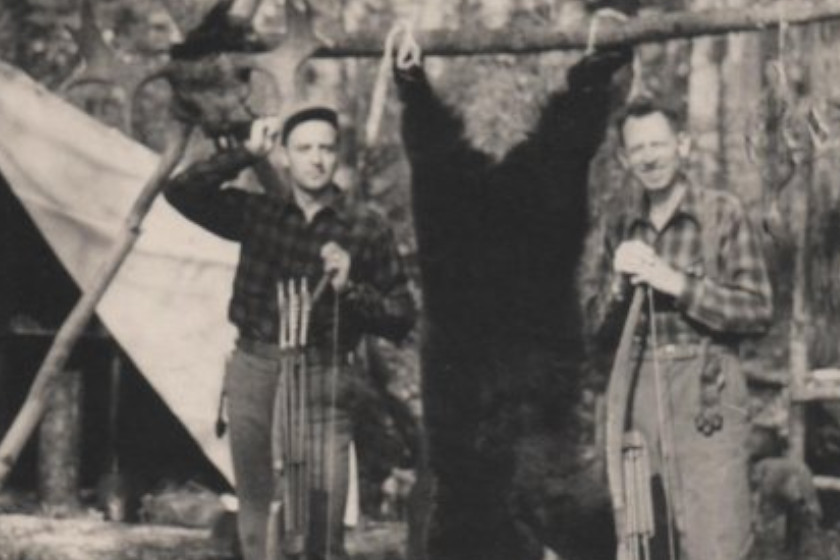
Wikimedia Commons: Donald Dryer
As Bear stated in later interviews, in the 1920s and 30s, if someone wanted a bow for hunting, they had two options. They could either construct it themselves or they could buy a custom one. Mass production of archery equipment was not really a thing at the time. However, that's when fate intervened. Bear later described in interviews how in the early 1940s, a representative for a New York glass company stopped by Bear's Detroit shop with a sample of fiberglass cloth. It was unlike anything Bear had ever seen before.
"I had never seen or heard of it, and I was very surprised that glass could be flexible like it was," Bear said in a 1986 interview. "I had not had any great interest in it until he mentioned it was elastic."
Bear was intrigued and realized the material could possibly be used to create a stronger bow that was less prone to breaking than the wooden recurves and longbows that were in heavy use for deer hunting at the time. The representative sent Bear some additional samples after he returned home. In the meantime, Bear contacted a chemist at Chrysler and tasked him with bonding rubber and metal together. It was fortunate timing, because the auto industry had just developed a glue that could stand up to the rigorous vibration of a car's motor. That meant it was perfect for creating bow limbs. There was only one problem, the resulting bows were a little too strong. Still, they realized the fiberglass made for a good backing material, and they continued to tinker with the concept. Eventually, the company got a fiberglass thread and used it instead. The thread got all the fibers flowing in the same direction and solved the problems they had using the cloth. It also allowed Bear Archery to quickly mass produce quality, durable recurves and longbows that were more affordable and easier to procure.
"For the first time in history we had a bow that we could sell to the dealer at a discount so he could make a little money and he had it available to the consumer," Bear said.
While fiberglass bows may be his greatest contribution, Bear was also responsible for the designs of many bowsights, bow quivers, grips, take down models, and shooting gloves.
The Marketing of Bear Archery Products
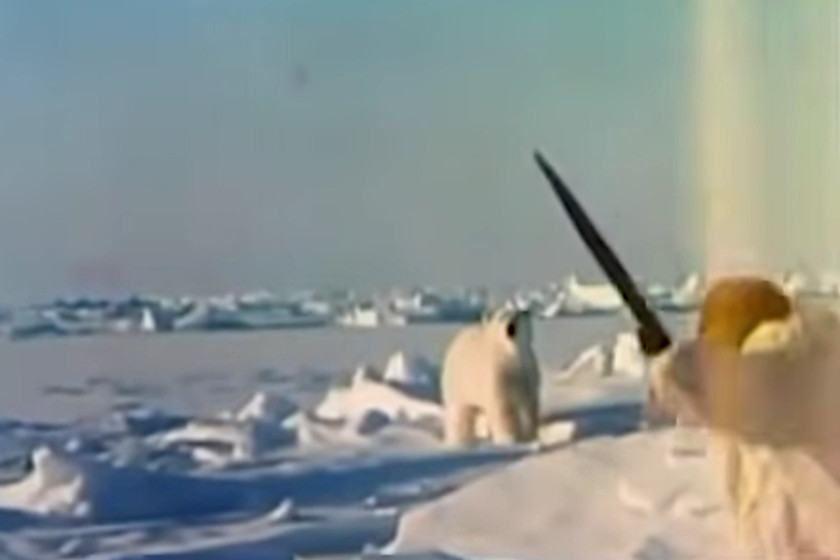
YouTube Screenshot: ClassicBowHunts
Even though Bear had finally figured out a way to mass produce his bows and interest was slowly growing, he realized he had to help things along. Production moved to Grayling, Michigan in 1947. One of the more famous stories about Fred is how he and his wife were still having difficulty making enough money. Their solution was to live in a canvas tent next to a river instead of a home. Living in such a spartan way helped Bear save money as he worked to build the business. In a famous 1982 interview with Fred Trost, Bear talked about why he started hunting all over the world as a form of marketing for his product.
"At that time, I had to not only make a product, but I had to create a market for it," Bear said.
He then explained how he realized the media and newspapers were very interested in stories of hunting with archery gear, more so than any of his target shooting accomplishments. There was some fortunate timing here, as more states started to open archery hunting seasons. As more money started to roll in, Bear took it and began investing in hunting trips around the world where he pursued elk, moose, brown bear, lions, tigers, and more.
"I could take some pictures, write a story, make a film. I could expense it out tax-wise and I could pay myself for doing it," Bear said.
Needless to say, it worked. Tales of Bear's exploits soon travelled far and wide. Many hunters today can trace their interest in the pastime to watching those early short films of Bear's adventures. In the process he broke six world records for big game. All the same, it wasn't until the 1960s that Bear finally made a decent living from his business. He sold the company in 1968 but stayed on in a chairman position, continuing to hunt and shoot until his death in Gainesville, Florida in 1988. By that time, bowhunting had finally grown into the popular, thriving sport it is today.
While Bear was not the first to build a bow for hunting or the first to film a bow hunt, one can argue he perfected both arts. It's hard to imagine the hunting industry being as popular as it is today without Bear's struggles and innovations to give back to something he loved so much. We truly owe the man a debt of gratitude we can never repay for popularizing the sport of bowhunting.
For more outdoor content from Travis Smola, be sure to follow him on Twitter and Instagram For original videos, check out his Geocaching and Outdoors with Travis YouTube channels.
